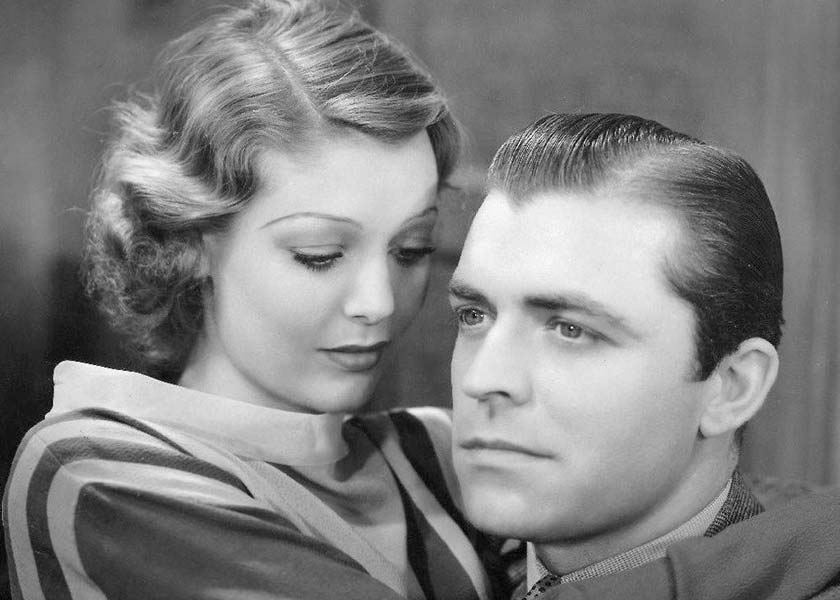Synopsis
The patrons of the Glass Company are tired of the shopworn
customer girls who are employed to date them. The company decides to
try using its fresh young stenographers, including the inexperienced and innocent
Florence Denny (Young). Already engaged to Tommy Nelson, one of the company's
salesmen, Florence finds Daniel (Talbot), one of her clients,
very
attractive. Events lead Daniel and Tommy to doubt her. They cannot believe that
Florence is as inexperienced as she seems. She trusts Daniel, but her trust is
apparently misplaced. He takes her to a house where he knows they will be
undisturbed. She asks him if this
is all she means to him. After a
confrontation with Tommy, who has followed them, Daniel apologizes, proposes, and
Florence accepts him.
Discussion
Rife with sexuality and cynicism, hardly any aspect of She Had to Say Yes would have been acceptable under the standards of the Motion Picture Production Code, which was not enforced until 1934. The Glass Company is paying its female employees to entertain the customers. The methods of entertainment are not limited, only the satisfaction of the clients is important. That a young woman could be as innocent as Florence seems to be is doubted by the male characters. Daniel, the nominal hero of the film, goes back and forth in his belief in her. Florence, stating the central question of the plot, 'why does a man not trust a woman?', seems resigned to the fact that men will be skeptical about a woman's innocence. Even after she accepts Daniels's apology and his proposal, she points out that she is accepting the lesser of two evils.
She Had to Say Yes makes an interesting contrast to
She Wouldn't Say Yes
(1945) relative to pre- and post-Code romantic films. The male characters in the
1933 film are obviously pursuing Florence for sex, and distrust a woman who
professes innocence.
In the 1945 film, which was forced to adhere to the
strict moral guidelines
of the Production Code, the virginity and
unavailability of the unmarried psychiatrist is not in question. The sexual
innuendo which pervades She Had to Say Yes is also absent. Bedroom
encounters are likewise mildly sexy, but suggestiveness is kept to a minimum. The
psychiatrist's suitor goes so far as to enter her bedroom and sit on her bed, but
then soon leaves. In She Had to Say Yes, Daniel believes that
Florence is sexually experienced and comes close to rape before she challenges him
and he changes his mind.
The two film's endings further illustrate the differences between pre- and post-Code films. In She Wouldn't Say Yes, the suitor gets no further than standing on the ladder to the upper berth where the psychiatrist is lying. A marriage acknowledged by both must be performed before he can enter. At the end of She Had to Say Yes, by contrast, the implication is that the couple will celebrate their wedding night before they are actually married.
Other films produced during the brief Pre-Code Hollywood period from 1930-34 include The Bachelor Father, Blondie of the Follies, Employee's Entrance, Hat Check Girl, A House Divided, The Kiss Before the Mirror, Ladies They Talk About, Laughter in Hell, The Maltese Falcon, Safe in Hell and Ten Cents a Dance.
Busby Berkeley, who already had several years experience as a dance choreographer, made his debut as a director with this film. He would also choreograph some of his most famous dance routines, for the films 42nd Street, Gold Diggers of 1933 and Footlight Parade, later the same year. Codirector George Amy was primarily an editor; this film is the first of his four credits as a director.

